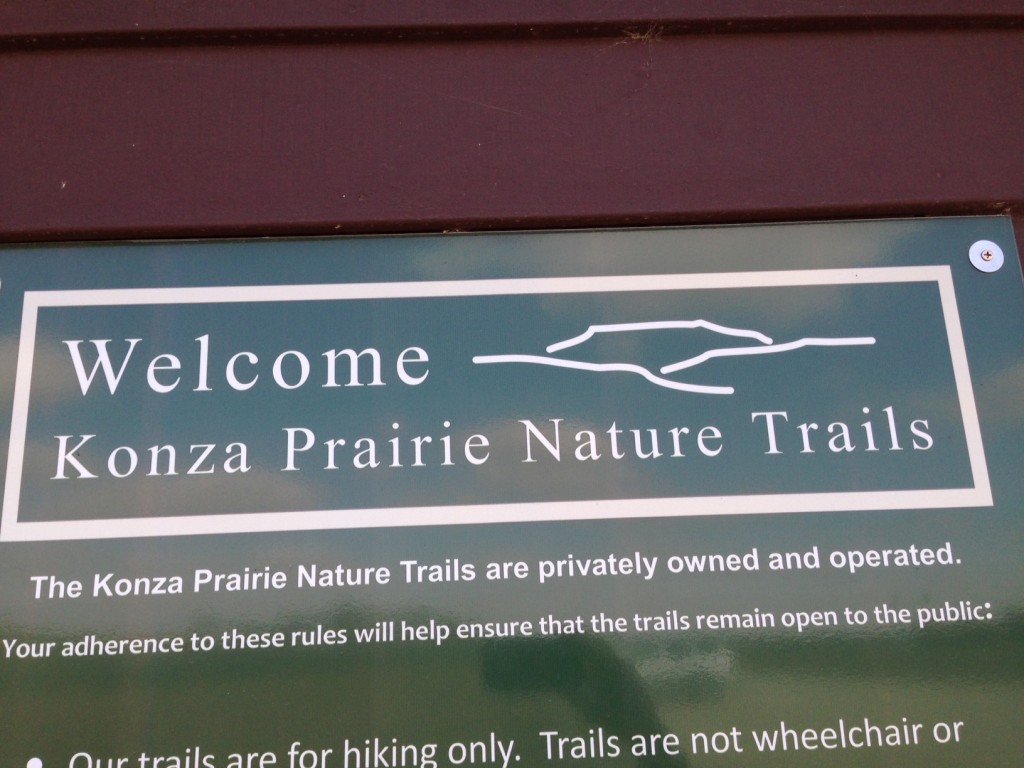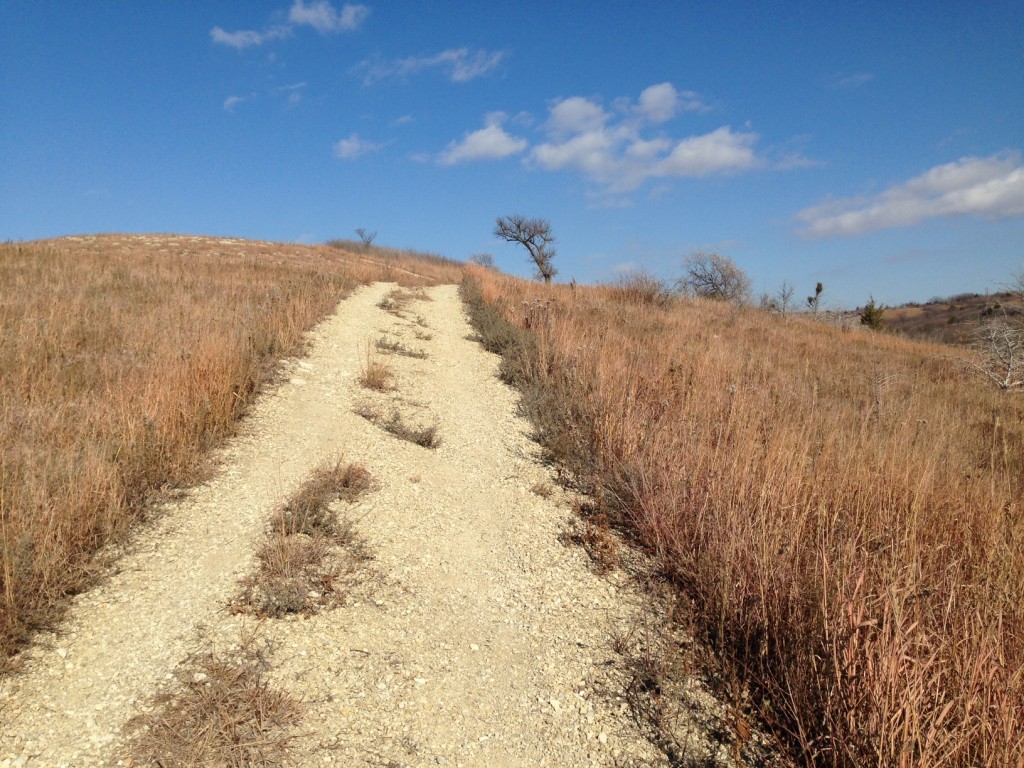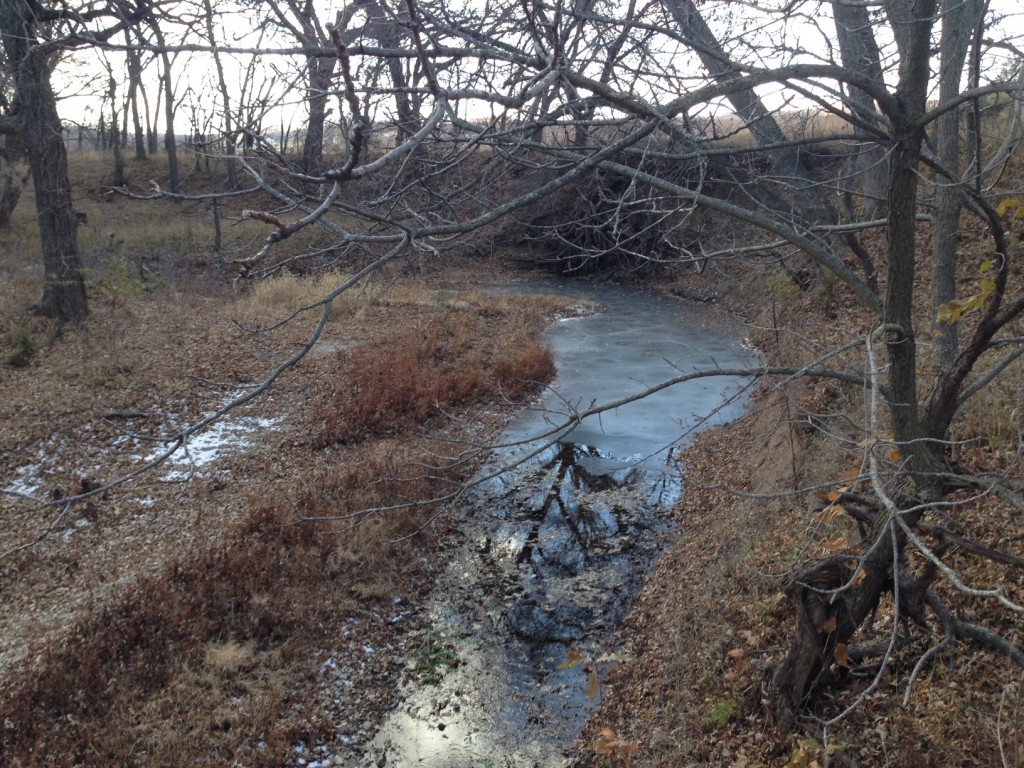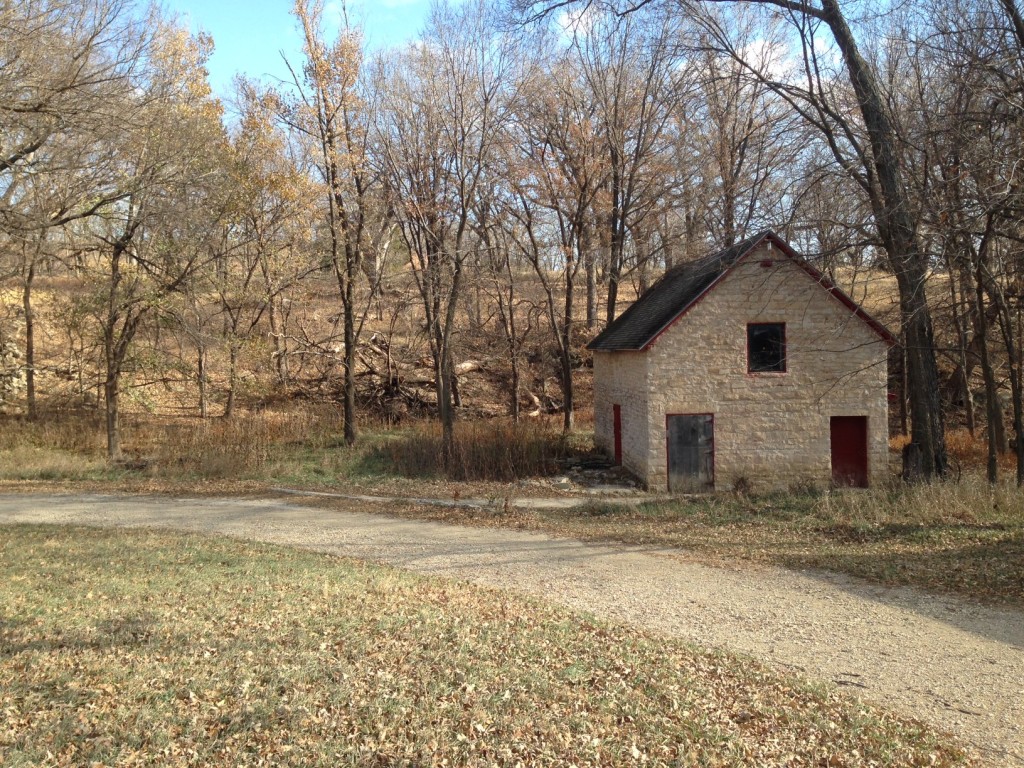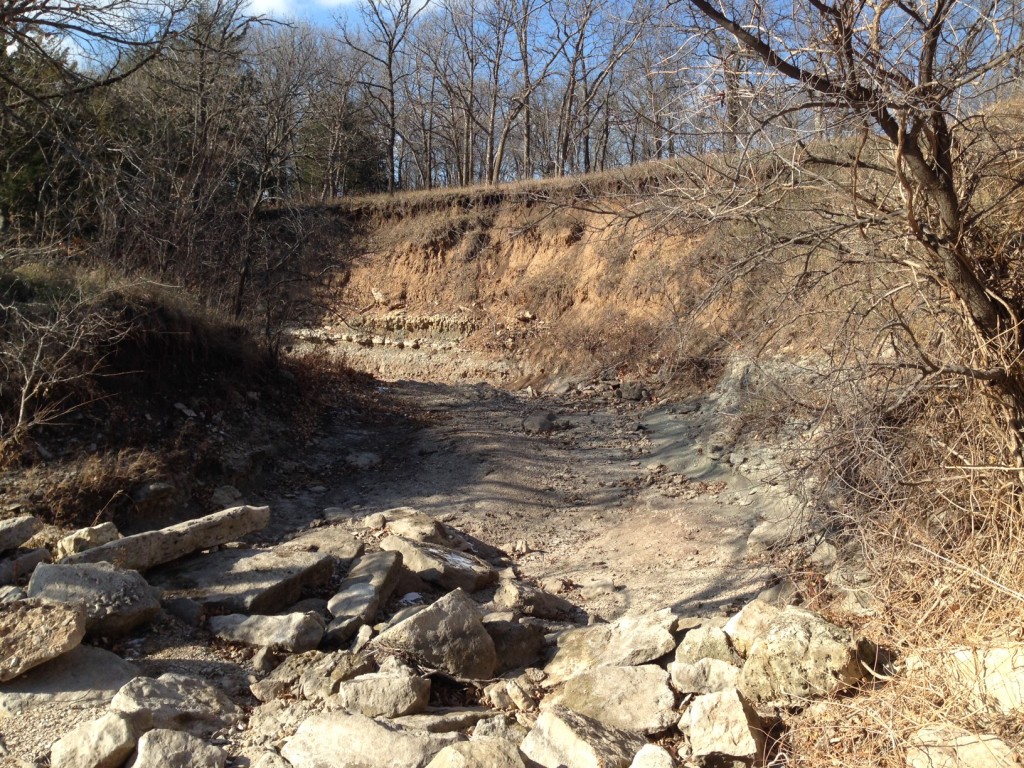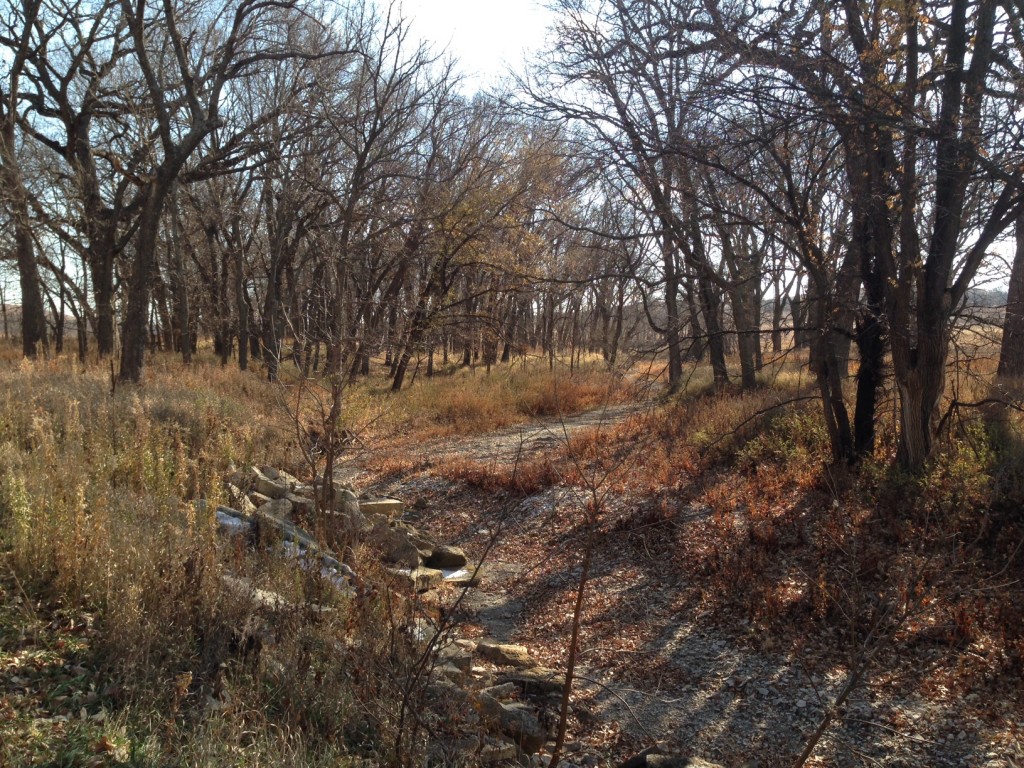Konza Prairie Biological Station is an 8.600 acre tract of native tallgrass prairie. Konza Prairie is a preserve of The Nature Conservancy and managed by Kansas State University. The prairie can be seen from Interstate 70. Most of it is off-limits because of on-going biological research, but there is a small section that is open to the public with three loop nature trails: 2.5, 4.5 and 6.5 miles.
Tom and I took advantage of the warmer weather yesterday and hiked the 4.5 mile trail. The sky was beautiful and blue and we were sheltered from the very cold wind during most of the hike. Konza Prairie is located in the Flint Hills region of Kansas, and there are 360 degree views from the top of the rolling hills. The tallest hill is about 1500 feet above sea level, and the valleys in the area go down to 1000 feet. There were a few good hikes up some hills and a few careful slides back down.
The Flint Hills are made up of layers of limestone and flint (also called chert). As you walk the nature trails in the Konza Prairie you can see the layers of rock sticking out. This area has a shallow layer of topsoil, so it was more suited to ranching than farming. Most of the preserve was farmed at one time and you can see stone fences where the farmers piled the rocks they took out of the fields. One remaining homestead on the preserve, settled by the Hokanson family in 1878, has a farmhouse made out of this limestone. The preserve land was ranched for the 50 years prior to the purchase in 1977 by The Nature Conservancy.
We didn’t see a lot of wildlife but the hills themselves have a haunting beauty. At first glance they seem desolate, especially after the bitter cold, but there are many varieties of grasses – tall and short. One kind of grass on the preserve is big bluestem, which can grow to 10 feet tall. It is an important grass on the prairie because, for every foot of grass above ground, there is a foot of root system below. This root system helps to stabilize the shallow soil There are woodpeckers, wild turkeys, deer and a resident herd of bison.
There are two creeks running through the Konza Prairie. We walked along Kings Creek, which is spring fed, and enjoyed the protection from the wind offered by the gallery forest that grew up along its banks. The trails are well-maintained and used as fire breaks when the prairie burns, which is necessary to maintain the grasses and keep the trees from taking over.
If you drive through Kansas on I70, the Konza Prairie is a great place to get out, stretch your legs, and see the ways Kansas looked back when the Native Americans first came to the prairies.

